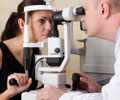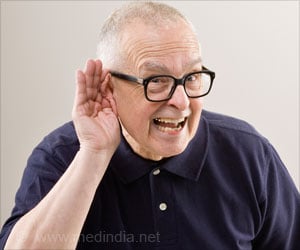Eye injuries to players have cost the NHL and its associated franchises more than $32 million over the last 10 seasons.

The researchers, based at the University of Toronto and Harvard Medical School, examined data from The Sports Network (TSN) and The Hockey News annual visor survey over the last 10 seasons from 2002 to 2013 in the NHL. They found that the 149 eye injuries identified to have occurred in the study's timeframe cost the NHL more than $32 million in missed games. In addition, the risk of eye injury is 4.23 times higher for players who do not wear a visor.
The study also found that the majority of eye injuries are caused by being hit by the puck or struck by a high stick (37 percent and 28 percent, respectively). Only 18 percent of eye injuries were caused by a fight or scrum, while the researchers could not identify the cause of injury for 17 percent of eye injuries. Additionally, players without visors had a more aggressive style of play, measured by penalty minutes, hits and fights in a case-control study. There was also a weak, but positive correlation between eye injuries and penalty minutes.
In June 2013, the NHL and the National Hockey League Players' Association (NHLPA) agreed to require visors be worn by players who are new to the league. Players who had played more than 26 games in the NHL may elect not to wear visors through a grandfather clause. The mandate came three months after New York Rangers defenseman Marc Staal suffered a puck hit that resulted in a retinal tear (in which part of the retina, light-sensitive tissue lining the back of the eye, gets pulled out of place) and orbital fracture (a fracture in the bone structure that support the eye). He was not wearing a visor at the time.
Many players who come to the NHL from other leagues may already be accustomed to wearing the visors, as they are required in the Canadian Hockey League and the American Hockey League - leagues that feed athletes into the NHL.
"Although it may seem like common sense to wear visors, until now there was little evidence that they decrease injuries or could save the league money," said lead researcher Jonathan Micieli, MD, of the department of Ophthalmology and Vision Sciences at the University of Toronto. "Quantifying these factors can make a big difference in the NHL's policy discussions. The majority of hockey injuries are accidental in nature, so it is not good enough for players to try to be more cautious."
Advertisement
Do Visors Have an Impact on Eye Injuries? A 10-Year Review of the National Hockey League (PO072) was presented at the 117th Annual Meeting of the American Academy of Ophthalmology, which is in session November 15-19 at Ernest N. Morial Convention Center in New Orleans. More than 25,000 attendees from 123 countries and 500 organizations gather each year to showcase the latest in ophthalmic education, research, clinical developments, technology, products and services. To learn more about the place Where All of Ophthalmology Meets, visit www.aao.org/2013.
Advertisement
About the American Academy of Ophthalmology
The American Academy of Ophthalmology, headquartered in San Francisco, is the world's largest association of eye physicians and surgeons - Eye M.D.s - with more than 32,000 members worldwide. Eye health care is provided by the three "O's" - ophthalmologists, optometrists, and opticians. It is the ophthalmologist, or Eye M.D., who has the education and training to treat it all: eye diseases, infections and injuries, and perform eye surgery. For more information, visit www.aao.org. The Academy's EyeSmart® program educates the public about the importance of eye health and empowers them to preserve healthy vision. EyeSmart provides the most trusted and medically accurate information about eye diseases, conditions and injuries. OjosSanos™ is the Spanish-language version of the program. Visit www.geteyesmart.org or www.ojossanos.org to learn more.
Source-Newswise











